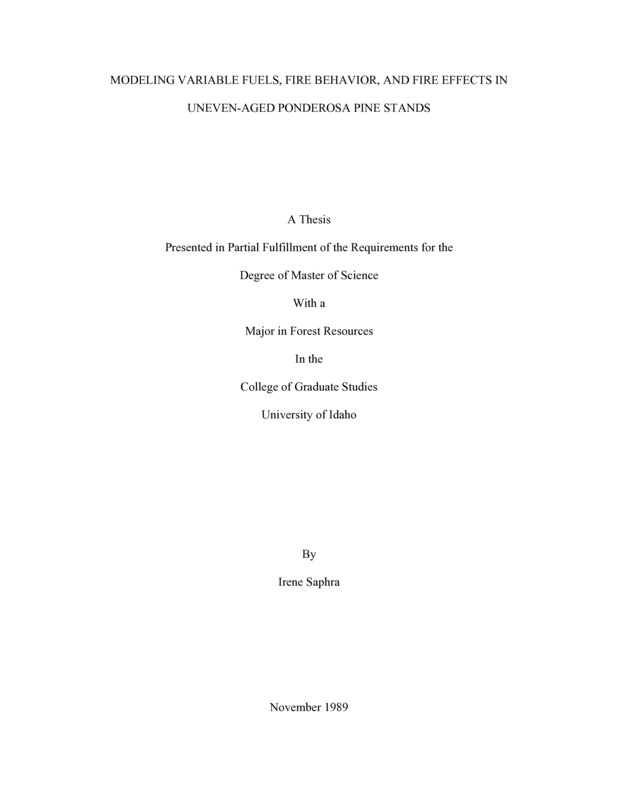PDF PREVIEW
Modeling Variable Fuels, Fire Behavior, and Fire Effects in Uneven-Aged Ponderosa Pine Stands Item Info
- Title:
- Modeling Variable Fuels, Fire Behavior, and Fire Effects in Uneven-Aged Ponderosa Pine Stands
- Creator:
- Saphra, Irene
- Date Created:
- 1989-11
- Description:
- Ponderosa pine stands are often managed as uneven-aged groups of trees. Prescribed burning may be beneficial in managing uneven-aged ponderosa pine stands, but variability in fuels within these stands often makes fire behavior and fire effects difficult to predict. I sampled three uneven-aged ponderosa stands in northern Idaho, and constructed site-specific custom fuel models to describe litter, herbaceous, shrub, and downed woody fuels at 72 sample points, and predicted fire behavior at each sample poin. Of the 72 samples, 19 produced high rates of spread, heat per unit area, and greater than 20% predicted mortality in trees with a 5-in diameter at breast height (DBH). Using cluster analysis, I classified these 19 fuel models into four “fuel groups”, A, B, C, and D. The four fuel groups differed significantly in the amount of shrub (p=.0001), herbaceous plant (p=.0001), and litter biomass (p=.0007) found in each group. Predicted fire behavior varied between the four groups, with group B, the medium shrub group, producing the highest rate of spread (p=.313), and group C, the tall shrub group, producing the highest heat per unit area (p=.0055). The fuel and predicted fire behavior characteristics of the four fuel groups also differed from the standard models 2, 5, and 9. Custom fuel groups are useful when predicting fire behavior and effects in uneven-aged ponderosa pine stands vary so much that no standard fuel model describes them accurately.
- Document Type:
- Thesis
- Library Call Number:
- SD420.7.S26 1989
- Subjects:
- fire behavior fire regime ponderosa pine pinus ponderosa uneven-aged stands variable fuels fuels fire effects forest ecology
- UIEF Unit:
- Flat Creek
- Location:
- UIEF
- Latitude:
- 46.852451
- Longitude:
- -116.763114
- Department:
- Department of Forest Resources
- Type:
- Text
- Format:
- application/pdf
Source
- Preferred Citation:
- "Modeling Variable Fuels, Fire Behavior, and Fire Effects in Uneven-Aged Ponderosa Pine Stands", UIEF Research Exchange, University of Idaho Library Digital Collections, https://www.lib.uidaho.edu/digital/uief/items/uief_0063.html
Rights
- Rights:
- In copyright, educational use permitted.
- Standardized Rights:
- http://rightsstatements.org/vocab/InC-EDU/1.0/

